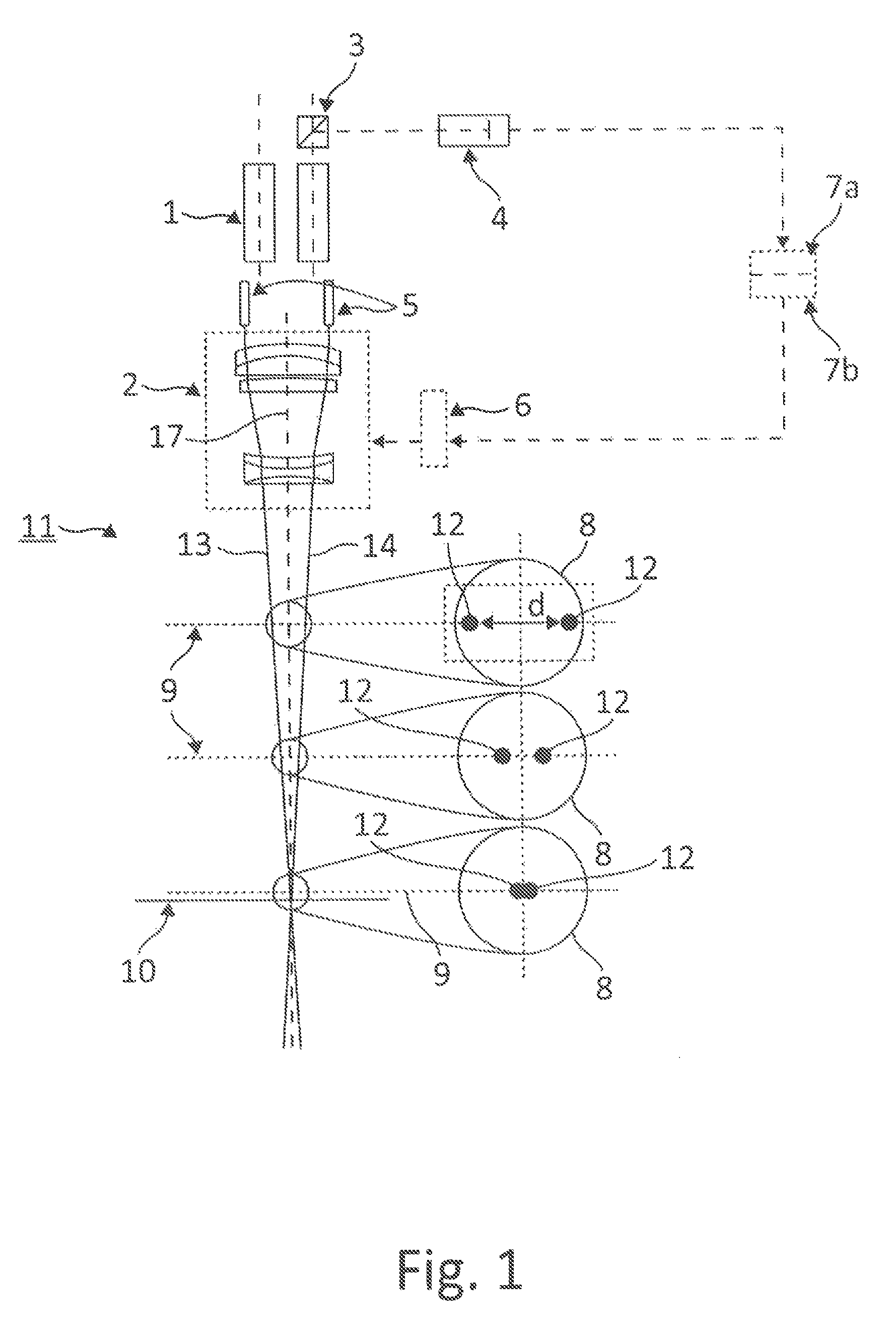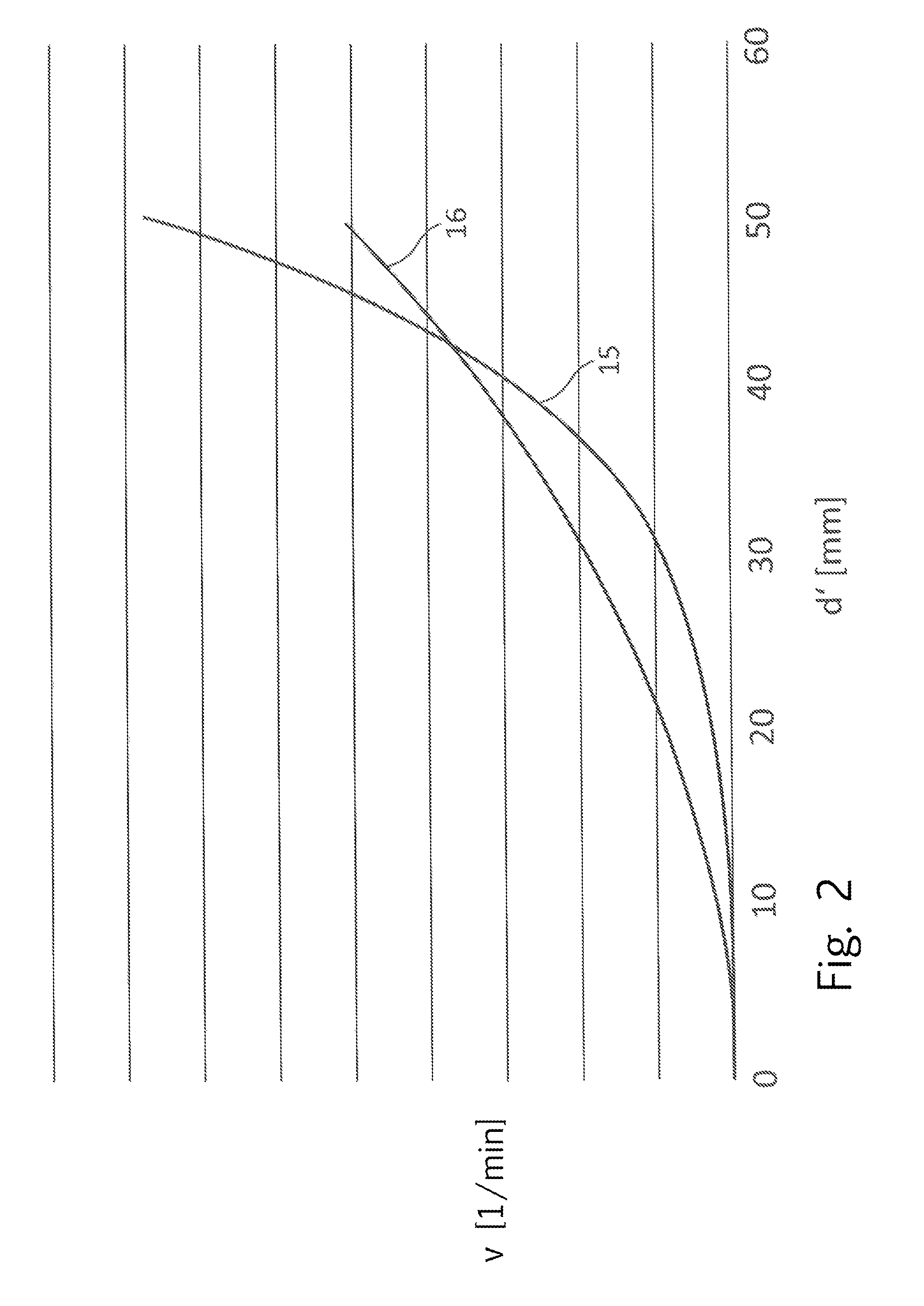Autofocusing method and device for a microscope
a technology of autofocusing and microscope, which is applied in the field of autofocusing method and autofocusing device for microscope, can solve the problems of difficult detection of laser dots, and inability to pass through the focal plane region too quickly, so as to reduce the spacing of markers and speed up the focusing speed. , the effect of speeding up the focusing driv
- Summary
- Abstract
- Description
- Claims
- Application Information
AI Technical Summary
Benefits of technology
Problems solved by technology
Method used
Image
Examples
Embodiment Construction
[0046]FIG. 1 schematically shows a particularly preferred embodiment of an autofocus device for autofocusing in a microscope 11. Only the most essential components of the microscope (here a stereomicroscope) are depicted, to the extent necessary for explaining the present invention. In this embodiment, the stereomicroscope 11 comprises a multifocus objective 2 as well as a zoom system 1 made up of two zoom channels. Further components of the stereomicroscope, such as the binocular tube, are not depicted here. For the sake of simplicity, it will be assumed that the focusing of microscope 11 is performed exclusively by means of multifocus objective 2. Shifts of objective 2 and / or of the microscope stage (not depicted) for focusing purposes are accordingly not considered in the present case.
[0047]The autofocus device is made up substantially of a detector 4, an evaluation unit 7a and a control unit 7b which are combined into one common unit, and focus drive 6 that controls multifocus o...
PUM
 Login to View More
Login to View More Abstract
Description
Claims
Application Information
 Login to View More
Login to View More - R&D
- Intellectual Property
- Life Sciences
- Materials
- Tech Scout
- Unparalleled Data Quality
- Higher Quality Content
- 60% Fewer Hallucinations
Browse by: Latest US Patents, China's latest patents, Technical Efficacy Thesaurus, Application Domain, Technology Topic, Popular Technical Reports.
© 2025 PatSnap. All rights reserved.Legal|Privacy policy|Modern Slavery Act Transparency Statement|Sitemap|About US| Contact US: help@patsnap.com



